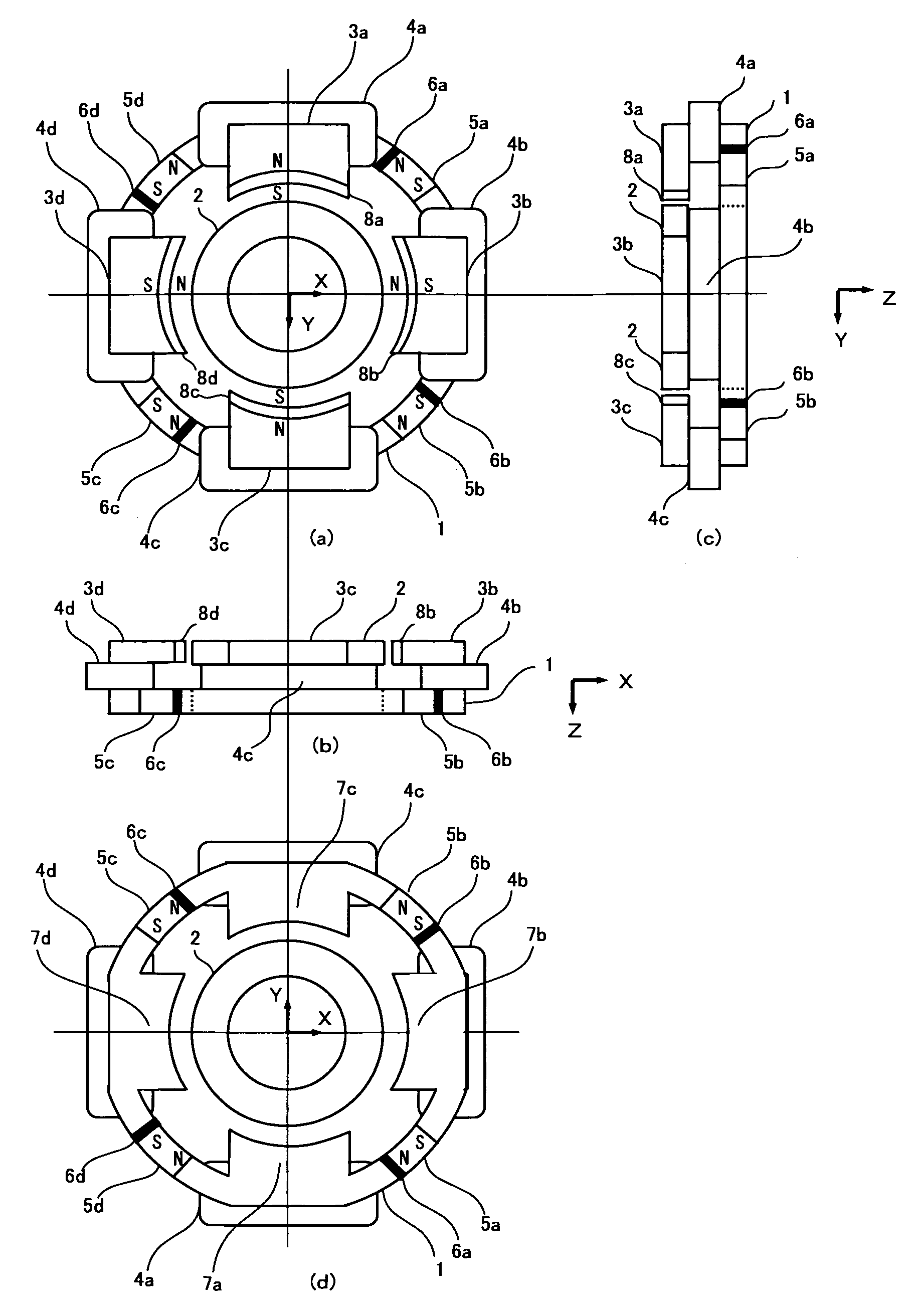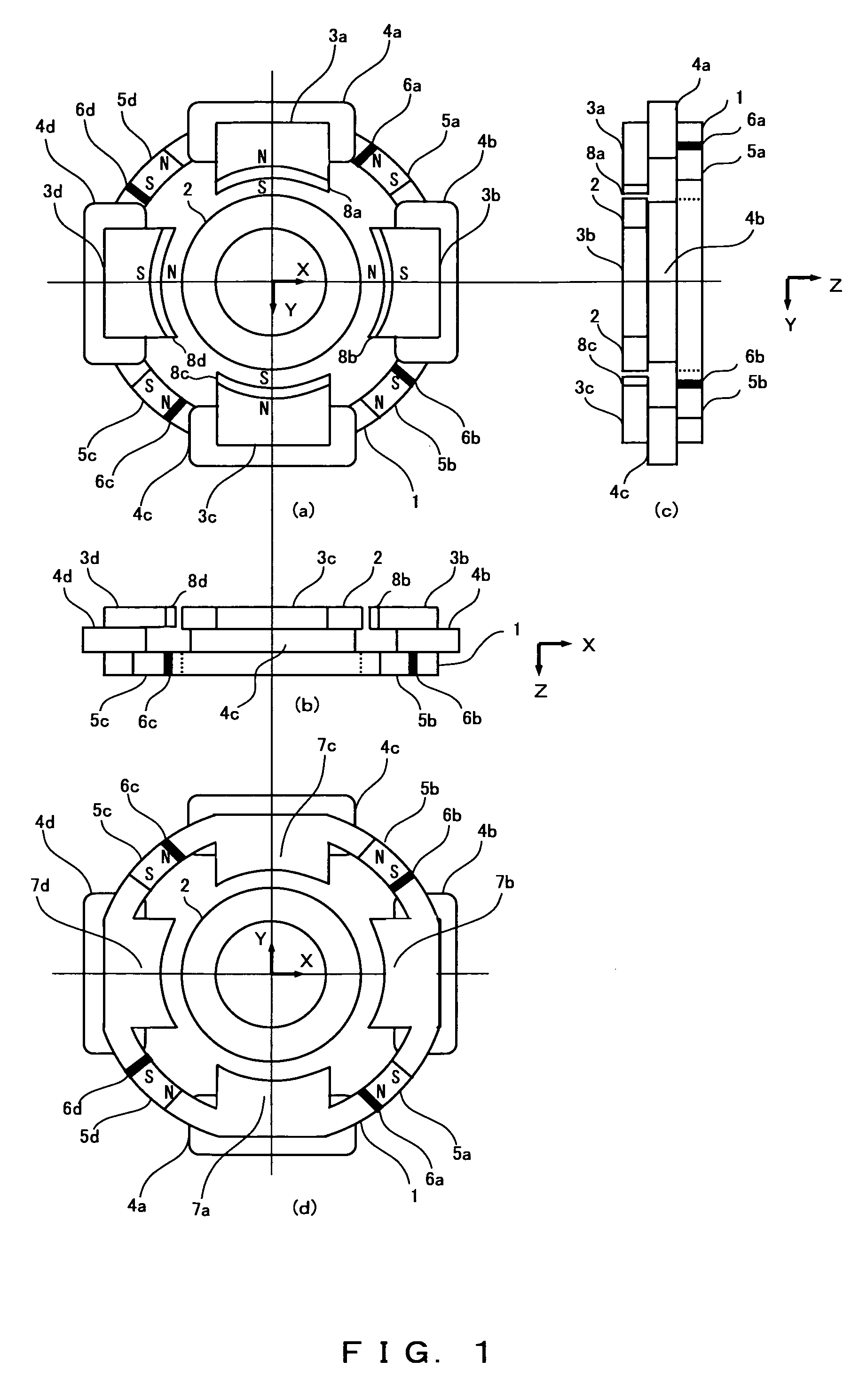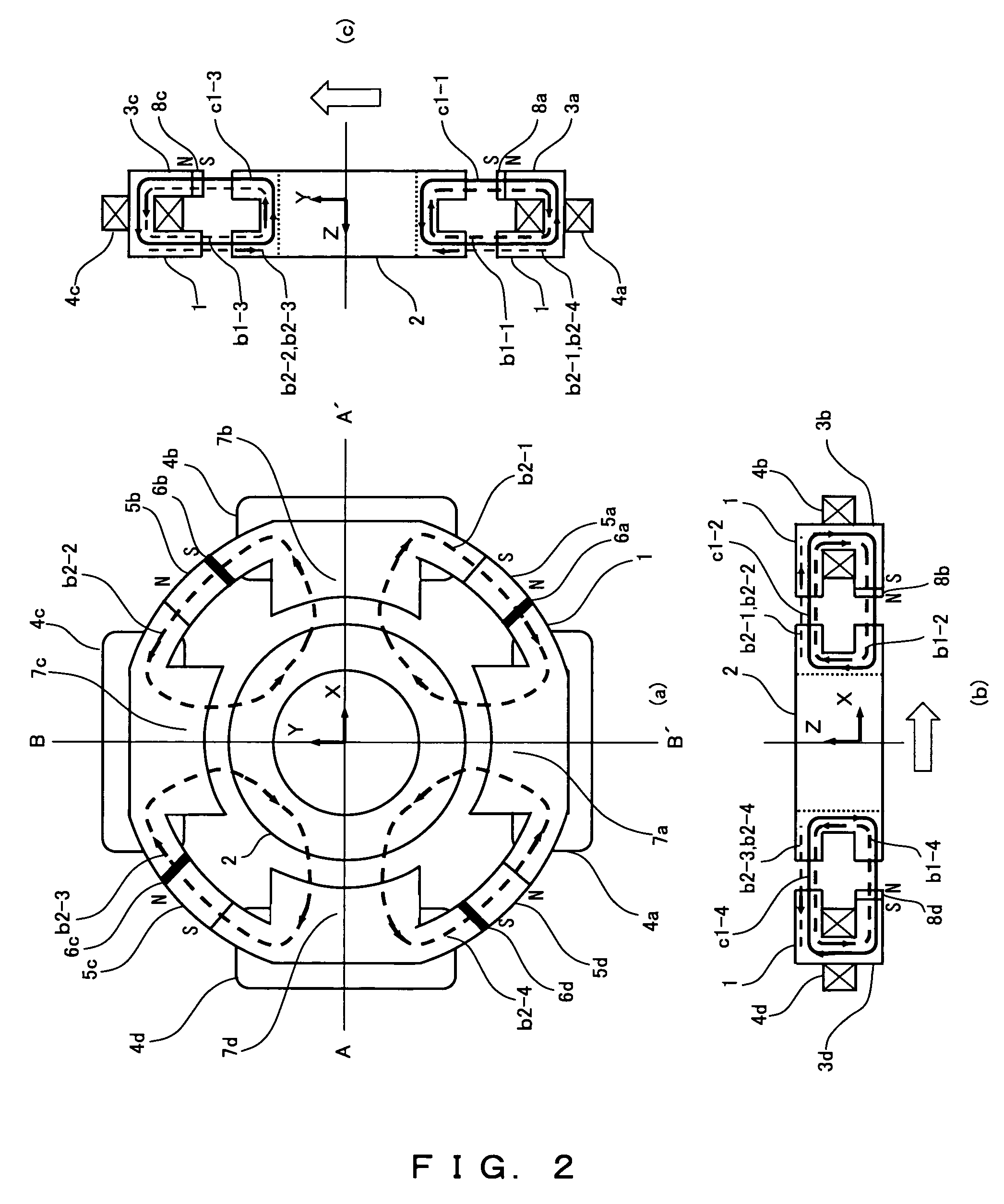Hybrid magnetic bearing
a magnetic bearing and hybrid technology, applied in the direction of magnetic bearings, mechanical devices, windings, etc., can solve the problems of limiting the amount of control force that can be increased, unable to generate strong control force, and large power consumption, so as to achieve high efficiency, reduce size, and increase rigidity
- Summary
- Abstract
- Description
- Claims
- Application Information
AI Technical Summary
Benefits of technology
Problems solved by technology
Method used
Image
Examples
embodiment 1
[0045]FIG. 1 shows a development view of the hybrid magnetic bearing of the present invention. FIG. 1(a) is a diagram viewed from commutating poles 3a-3d. FIG. 1(b) is a side view viewed from commutating pole 3c. FIG. 1(c) is a side view viewed from commutating pole 3b. FIG. 1(d) is a diagram viewed from main poles 7a-7d.
[0046]The hybrid magnetic bearing shown in FIG. 1(a)-(d) consists of a stator 1 and a rotor 2. The stator 1 has a first commutating pole 3a, a second commutating pole 3b, a third commutating pole 3c, and a fourth commutating pole 3d which are provided in a protruding condition to the rotor 2; a first control coil 4a, a second control coil 4b, a third control coil 4c, and a fourth control coil 4d; a first permanent magnet 5a, a second permanent magnet 5b, a third permanent magnet 5c, and a fourth permanent magnet 5d; a first sensor 6a, a second sensor 6b, a third sensor 6c, and a fourth sensor 6d; a first main pole 7a, a second main pole 7b, a third main pole 7c, an...
embodiment 2
[0068]FIG. 8 explains a case of a control in which main poles 71b, 71d, 71f, and 71h, and commutating poles 71a, 71c, 71e, and 71g are arranged on the same plane, and control fluxes are generated in control coils 72a-72d. FIG. 8 explains only a case of the control in the X direction for convenience. A bias flux b75a shown in FIG. 8 forms a magnetic path traveling from the positive pole of a commutating pole permanent magnet 74d at the end of the commutating pole 71a to the main pole 71b via a rotor 75. A bias flux b75b forms a magnetic path traveling from the positive pole of a commutating pole permanent magnet 74a at the end of the commutating pole 71c to the core, to the main pole 71d and to the rotor 75. The bias flux b75c forms a magnetic path traveling from the positive pole of a commutating pole permanent magnet 74b at the end of the commutating pole 71e to the main pole 71f via a rotor 75. A bias flux b75d forms a magnetic path traveling from the positive pole of a commutatin...
embodiment 3
[0076]FIG. 9 is a development view of the configuration of Embodiment 3. FIG. 9(a) is a top view. FIG. 9(b) is a side view viewed from the control coils 82c and 82g end. FIG. 9(c) is a side view viewed from the commutating poles 82d and 82f end. FIG. 9(d) is a bottom view.
[0077]The hybrid magnetic bearing of the present invention shown in FIGS. 9(a)-9(d) has a configuration having a magnetic bearing that controls a rotor 81 upward and downward of the rotor 81.
[0078]The upper magnetic bearing has control coils 82a-82d, first through fourth cores 83a-83d, and first through fourth permanent magnets 84a-84d. The first through fourth cores 83a-83d have the first through fourth main poles 85a-85d and the first through fourth commutating poles 87a-87d projecting toward the rotor 81, and each of the main poles 85a-85d opposite to each of the commutating poles 87a-87d, respectively. Here, it is desirable that the first through fourth main poles 85a-85d and the first through fourth commutatin...
PUM
 Login to View More
Login to View More Abstract
Description
Claims
Application Information
 Login to View More
Login to View More - R&D
- Intellectual Property
- Life Sciences
- Materials
- Tech Scout
- Unparalleled Data Quality
- Higher Quality Content
- 60% Fewer Hallucinations
Browse by: Latest US Patents, China's latest patents, Technical Efficacy Thesaurus, Application Domain, Technology Topic, Popular Technical Reports.
© 2025 PatSnap. All rights reserved.Legal|Privacy policy|Modern Slavery Act Transparency Statement|Sitemap|About US| Contact US: help@patsnap.com



